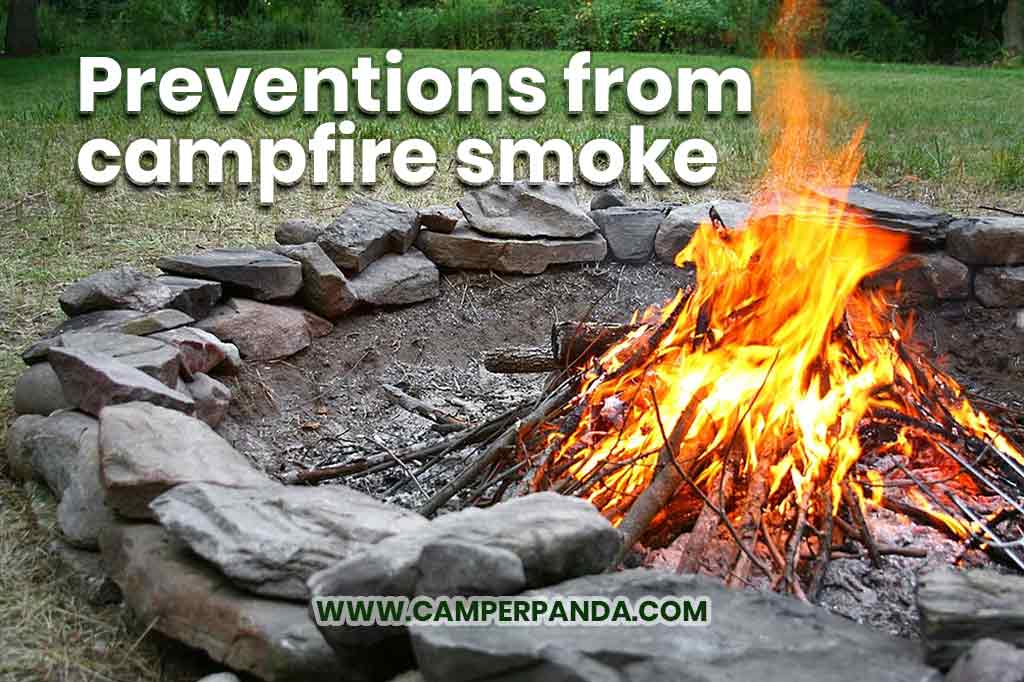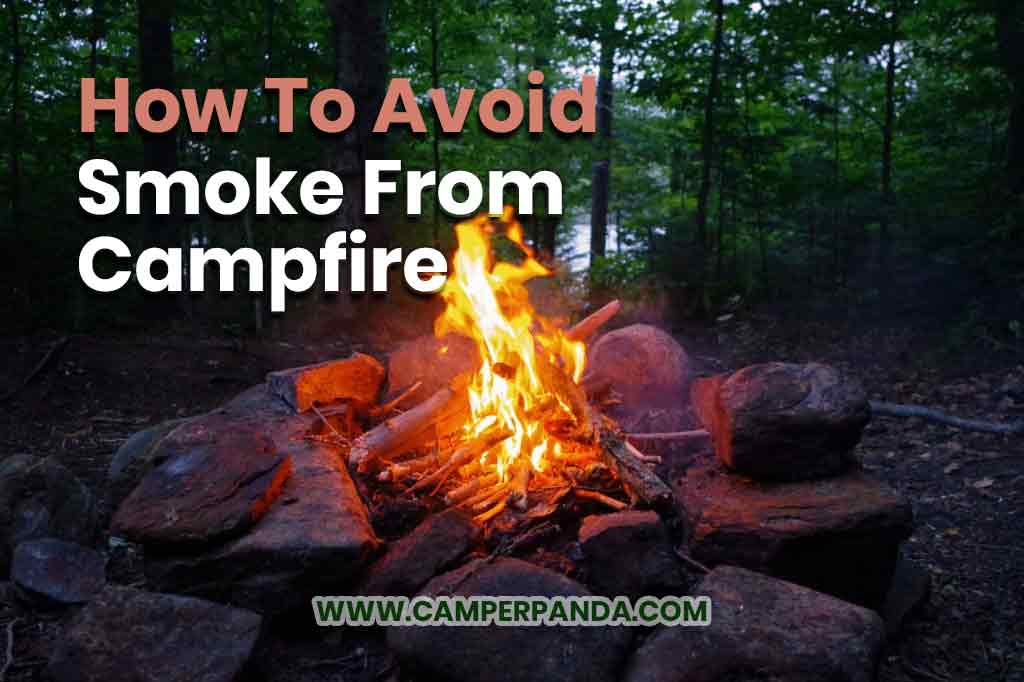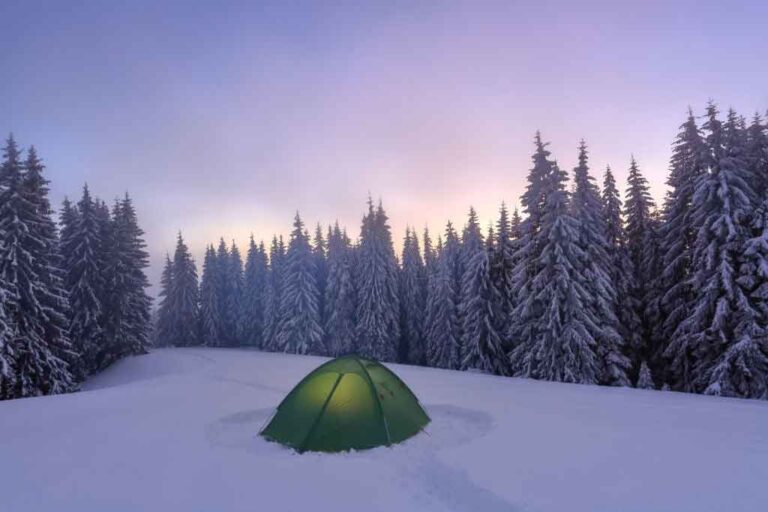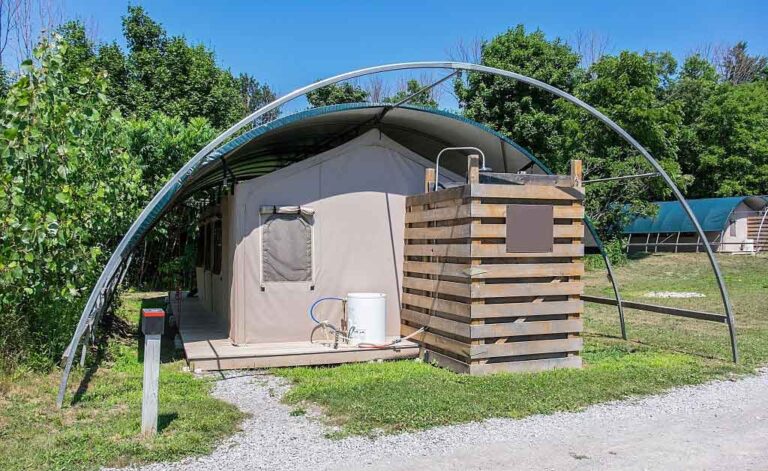Smoke from Campfire | 8 Causes and Preventions
Smoke is the multitude of small-scaled unburnt morsels. Smoke consists of minute carbon particles and mini particles of tar. Smoke from campfire is produced when there is not enough presence of oxygen to burn the fuel. It means that smoke could be produced by incomplete combustion.
A campfire is a fire at a campsite that produces light and warmth, and heat for cooking. At summer camps, the word campfire is often used for an event at which there is a fire.
Hence, smoke from a campfire means when there is incomplete combustion of fuel (tinder, kindling, and firewood) in the campfire.
What are causes for the production of smoke from a campfire?
Actually, campfire smokes when you are using inappropriate material. It also smokes when you make mistakes in building campfire such as not providing proper airflow or using damp wood.
Research of U.S. Environmental Protection Agency on campfire smoke:
According to the scrutiny of the U.S. Environmental Protection Agency, campfire smoke can aggravate existing health conditions. The carcinogens emitting from smoke enter your lungs and bruise your lungs. If you stay for a long time in the campground, it becomes disconsolate for you.
U.S. forest service study in 2004, EPA findings, and an informal poll of travelers raise few more reviews about how healthy it can be to sit in a campground with dozens of campfires flickering into the night.
Smoke from campfire smells good but it has worse effects on health. The fine particles present in smoke are the biggest ultimatum for health.
If these minute particles enter into your eyes, It will result in the burning of your eyes. If these particles enter your respiratory system through the nose, it will result in a runny nose, and illness such as bronchitis.
If a person has asthma conditions, it will cause asthma conditions severe than before. It also triggers asthma attacks. Fine particles also provoke heart attack, heart failure, irregular heart rhythms, stroke. It particularly occurs in those people who have already those symptoms.
Particulate matters present in smoke not only affect us but also there are other compounds present in smoke that triggers severe health conditions.
The EPA analyzes that the other compounds that influent health are benzene, formaldehyde, acrolein, and polycyclic aromatic hydrocarbons.
The smoke can irritate lungs and make them more sensitive towards infection, including that from COVID-19.
Some people commented on campfire smoke which triggers respiratory infections and heart failures.
“I used to volunteer on Capitol Reef (National Park) and smoke from wood fires was bad nearly evening“, wrote Ralph in a comment to a reader survey traveler conducted in April, “say no to wood fires at all national parks“.
“Campfire smoke is a real problem“, wrote Deb, “Too many people are so unaware of anything other than themselves that they just don’t care about the people around them. I’ve been in campgrounds where I couldn’t sleep because of smoke. It’s time for fresh air and quiet camping in the national parks.”
Contrarily, Rob Klang commented:
“Camping and campfires go together like nothing else. It seems that everyone has been deemed to cause us harm. But most things that are enjoyable are not good for you! The amount of smoke inhaled sitting around a campfire is nothing compared to what a firelighter breathes in. Life is too short to worry about the things that could do you harm…. grilling meat, drinking more than one drink per day. Camping and sitting around a fire are relaxing and enjoyable for all who do it. There are much more pressing concerns other than the effects of a little smoke inhalation in our lives. We shouldn’t be concerned about the trivial while enjoying camping in the great outdoors in our beautiful national park campgrounds, or anywhere“.
“Informal study” of Mary Ann Davies:
In 2004, Marry Ann Davies conducted an “informal study” for the Forest Service of the pollutants generated by campfires.
Marry-Ann Davies conducted this because of those people who burn strictly wood and add garbage which includes candy wrappers, aluminum foil, and colored cardboard, etc.
Analysis of Davies:
Davies discovered that toluene is present in the smoke of campfires in copious forms. The toluene is mostly produced in nickel-cadmium batteries than burning wood in a campfire.
Toluene can cause irritated eyes, nose, and throat, dry or cracked skin, headache, dizziness, feeling of being drunk, confusion, anxiety, sleepiness, irregular heartbeat, stumbling, fainting, kidney damage, or even death.
The EPA also examines that, “Particles in wood smoke can reduce visibility. Particles can also create environmental and aesthetic damage in our communities and science areas_ like national parks.
Reference:
https://www.nationalparkstraveler.org
Reasons for the production of smoke from a campfire:

There are two crucial reasons for the production of smoke from a campfire.
1- Damp wood:
There is the presence of wet wood which causes the production of smoke from a campfire. Wet wood smokes due to the presence of moisture. This smoke creates a build-up of creosote in your flue. This creosote clogs your flue and can turn into a fire hazard if not cleaned and maintained.
2- Inappropriate airflow:
Another critical reason for the production of smoke from the campfire is improper airflow. The level of oxygen decreases to a small extent due to irregular airflow. It results in incomplete combustion of oxygen which causes the smoke to be produced from a campfire.
3- Mini debris:
Don’t throw minute particles/ debris, leaves, grass snippets, or pine straw into your, as this may invigorate it to produce more smoke.
4-Minerals present in wood:
Some non-burnable minerals present in tree’s cells cause the production of smoke from a campfire like calcium, potassium, and magnesium. Later, it turns into ash.
5- Non-volatile organic compounds:
Some volatile organic compounds such as hydrocarbons are seen evaporating during the burning of the wood. They start to evaporate at 149 degrees celsius.
If the fire is hot enough, the hydrocarbon will start burning into flames. If they burn, then no smoke will be present because all the volatile organic compounds are turned into carbon dioxide and water.
6- Using greenwood:
Another influential factor that results in the production of smoke from campfire is the consumption of greenwood. The greenwood doesn’t mean that its color is green.
It connotes that the wood which is recently chopped down. This wood contains moisture that results in smoke being produced from the campfire.
7- Fueling it too quickly:
The campfire should gradually build-up, starting with the small sticks and twigs, and slowly adding on large pieces of wood. This will help it burn cleaner and less smoke is produced from a campfire.
If you throw wood in large quantities into your campfire, it will become difficult of burning of woods, and as a result, more smoke is produced from it.
8- Use of Painted or varnished wood:
The usage of painted or varnished wood results in smoke production. Some paints can produce harmful fumes when they are burnt. Some paints contain heavy metals while older paints contain lead. In short, paint is produced from different chemical compounds in the industry. Most of which would produce smoke with some degree of toxicity.
Why you should prevent campfire smoke?

Smoke should be prevented from campfire because it results in harmful effects such as heart failure, lungs failure and stroke etc.
Effects of smoke from campfire:
1- Damage to food during cooking:
The smoke from a campfire ruins the food during cooking. Campfire smoke produces some nice smoky flavor on foods.
But if smoke escalates beyond the limit then it can damage the food and the food’s taste can become worse which can’t be eaten.
The smoke produced from a campfire fits well with various types of meats. But if we try to cook anything else than meat, it will dilapidate its taste.
2- Results in air pollution:
The smoke from a campfire is a form of air pollution. The smoke produces from a campfire. The environment will have millions of dust particles that are being produced from smoke. These microscopic particles include toluene, benzene, formaldehyde, polycyclic aromatic hydrocarbons.
If all the people burn campfires in one area day by day, all the smoke will eventually form a haze in the nearby area. The temperature of the environment is increasing due to burning campfires.
3- Impact on forest life:
Campfire smoke also affects the trees, animals who live in the forest, and all other forest lives. Carbon monoxide and nitrogen dioxide shoot up to a large extent due to campfire lighting. It asphyxiates animals in the forest.
The plants are also affected badly due to falling off carbon dioxide volume and emerging carbon monoxide volume. The respiration process in plants impinges to a great extent because of declining carbon dioxide volume.
4- Effect on aquatic life:
The smoke from a campfire also greatly affects aquatic life. People mostly throw off ash which is produced from the campfire into the rivers and canals. Ash contains 27 different kinds of particles that affect badly to live.
Also, campfire smoke has a direct impact on aquatic lives because some molecules are soluble in water and some produce a layer over water which results in suffocation to aquatic life.
5- Results in smell like smoke from clothes:
The horrible smell of smoke from a campfire gets sadly stuck to your clothes. Well, you once get your clothes to smell like smoke, it can be archly hard to unload that uncharitable smell. It’s hard to get rid of smoke from clothes either by washing or anything else.
6- Ruin the view:
Turns out the haze produced from campfire smoke is not only bad for the environment but also for us well.
With all the haze and campfire smoke in the way, you won’t be able to enjoy some traditional camping experiences like stargazing or simply just laying back and enjoy the view.
Instead, there will be foggy everywhere and we will not be able to see anything.
7- Dangerous for pregnant women:
Pregnant women are badly affected by smoke from a campfire. The kids and elderly people are also get affected by it. These nasty particles can invade the respiratory system and the fetus can be affected by them.
8- Damage respiratory system:
Respiratory failure occurs if we inhale smoke from a campfire. Campfire smoke can irritate your lungs, cause inflammation, runny nose, bronchitis, affect your immune system, and make you more sensitive to lung infections, including SARS-CoV-2, the virus that causes COVID-19.
According to research, people who are recovering from COVID-19 may be at increased risk from health effects from exposure to wood smoke mostly in patients with asthma. Breathing shortage occurs for the person who inhales smoke from a campfire.
9- Damage cardiovascular system:
There is an increased risk of heart attacks, strokes, worsening heart failure, and pulmonary emboli if we inhale smoke from the campfire.
People above 65 are more prone to heart failure when they exposure to campfire smoke. If we inhale smoke from a campfire, it results in activation of the fight or flight system, increasing heart rate, constricting blood vessels, and increasing blood pressure.
10-Damage to eyes:
Eyes are also affected by smoke from a campfire. It results in itchy eyes, blindness, reduce the vision of the eyes which results in near-sightedness and far-sightedness.
Prevention of smoke to be produced from campfire:
1-Use of dry wood:
When it comes to sourcing the best wood to burn in a campfire, your primary consideration needs to be whether it is properly seasoned. Burning unseasoned and wet wood is completely ineffective for burning and should be avoided at all costs.
A wood that has been recently cut from a tree contains 60% moisture, and this means it will require much heat to boil off water and evaporate it. This will cause the production of smoke from wood. Dry wood increases heat efficiency and lowers maintenance
2- Usage of best firewood:
All woods burn, but not all woods burn the same. Some woods burn cleaner, hotter, and slower than others. Some smoke a lot and some have resins or sap that obstruct your chimneys very fast.
The woods to be burnt are hardwoods such as maple, white oak, ash, birch, apple, hickory, and red oak.
Different firewoods are categorized by the amount of heat energy they produce per cord of wood. The best firewoods offer the heat energy equivalent of 200 to 250 gallons of fuel oil.
3- Proper airflow:
There should be proper airflow while burning fuel in the campfire. If there is improper airflow, then the oxygen supply falls off which results in incomplete combustion of fuel which produces smoke and carbon monoxide other than carbon dioxide.
The smoke is prevented if there is proper airflow so that supply of oxygen should be sufficient for complete combustion.
4-Avoid throwing of mini debris:
If you want to prohibit the production of smoke from a campfire, you should avoid throwing minute particles, leaves, and grass snippets into the campfire. Because these particles result in a stoppage of burning and cause the smoke to produce.
5- Don’t use tinder past getting the flame started:
A plug of the newspaper is the best way to start the flame but adding more after the fire is established will only result in producing harmful smoke.
6- Keep it clean:
Residue can create a flame that is not cleaned that produces a lot of noxious smoke and makes starting fires in the future harder. A good, stiff wire brush does wonders here, but use caution and avoid damaging the pit lining.
7- Softwood for kindling:
Using scraps of softwood such as pine will help you get your flame going, but softwood burns cooler than hardwood, thus creating more smoke.
8-Remove all green near your campfire:
Moisture results in more smoke production. Hence, to stay away from it, remove all the green components and wetness near your campfire.
9-Avoid woods like Robinia, elder, and poplar:
These woods produce a lot of smoke even when dry. They are naturally smoky woods. They do not burn like tinder. Hence, avoid this wood from burning.
Setting up a conventional campfire to restrict smoke:
1- Create a portable campfire:
You have to dig a hole firstly in the ground, only a few inches deep. This hole will become your fire pit and in this, you have to place your woods.
Then you have to surround this hole with rocks. Then create a gap or a hole in that direction in which wind is blowing. Then place a tall rock nearly three times larger than all other rocks opposite to the gap.
This gap not only provides proper air to burn the fuel properly but also has the advantage if the wind is blowing in one direction, all the smoke will just hit the back rock. Smoke is attracted by some objects. Hence, the back rock will not only absorb some smoke but also squeeze the smoke into one place.
2- Constructing a Dakota fire:
This is another method for making a smoke-free campfire. It is a significant way of creating a prominent campfire. In this method, u have to dig two pits that are tied up by a small shaft between pits.
One pit is used to put the wood and the other pit is used for an appropriate supply of oxygen to keep the fire burning. This method provides sufficient airflow to prevent the smoke from being produced. This is one of the most effective ways to prevent campfire smoke.
3- Use a portable fire pit:
There are various fire pits but the best one is the BioLite fire pit. This fire pit can cook your meals and it can also be used as a campfire.
It is completely smokeless. Its weight is about 20 lbs and it’s only ten inches high. It is lightweight. It has side handles. It also has a carry cover which is quite good.
The fuels it uses are charcoal and firewood. It also has a battery enough that it could burn for days on end. There is an app on the phone by which its fire is controlled.
It also uses Bluetooth to modulate the vehemence of flames of the fire pit. There is no need for a separate grill, fire pit, and chimney firestarter. Therefore, cooking is much easier with it.
We can use the single fire pit for all three of those functions in the course of one evening. It doesn’t make a mess and we can clean it easily.
Reference:
https://survivaltopic.com
Treatment of various consequences which are caused by campfire smoke:
1- Respiratory system’s treatment:
Incomplete combustion of a fuel produces irritant compounds that can cause direct severe injury when they contact the skin and mucous membranes.
Examples of chemical compounds which irritate are Sulphur dioxide, ammonia, hydrogen chloride, and chlorine. They cause cough, shortness of breath, hoarseness or noisy breathing, become prone to asthma, inflammation of lungs.
Steps for treatment of smoke Inhalation:
Firstly, the patients have to be removed from the source of the smoke to an area free of smoke and fire. The patient needs to move to the well-ventilated area.
When this is done, then the doctor has to assess the patient that what level of care the patient requires.
Ask the patients to create their level of consciousness and ask them if they are in a pain, where is the pain.
Look into the nostrils of patients and mouth to check the signs of soot.
If the finds any of the following symptoms related to smoke inhalation seek medical attention immediately:
Ø Difficulty in breathing
Ø Mental confusion
Ø Prolonged coughing
Ø Hoarse voice
Treatment at home:
Ø Instead of taking medications and instructions given by the doctor, there are some at-home things for treatment.
Ø Take rest as much as possible.
Ø Sleeping in an inclined position or drop your head with pillows help you breathe easier.
Ø Avoid cigarette smoking and passive smoking.
Ø Avoid things that may irritate your lungs. Such as dry air, hot and cold.
Ø Do any exercise for breathing told by your doctor also known as bronchial hygiene therapy.
2-Removal of campfire smoke from clothes:
Ø The use of Hot water is the best option to remove smells from clothes.it removes unwanted perfumes during the wash.
Ø Just add one cup of white vinegar after adding detergent. It removes odor from your clothes.
Ø Baking soda also deodorizes the clothes across many other functions. It is also added after the detergent. In this way, the smell of campfire smoke is removed from the clothes.
This was a detailed guide on Smoke from campfire and How to stop this smoke from being produced. If you like to know more about camping insulation, here’s a detailed guide on “How to Insulate a Tent For Winter Camping: 21 Surprising Tips“
Happy camping!







